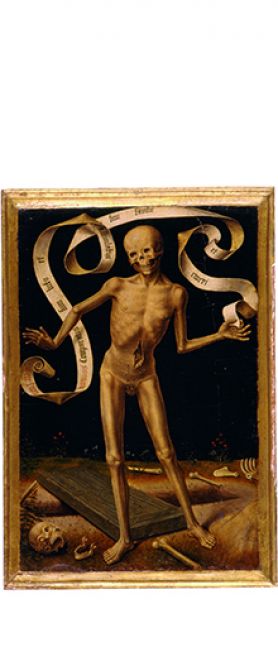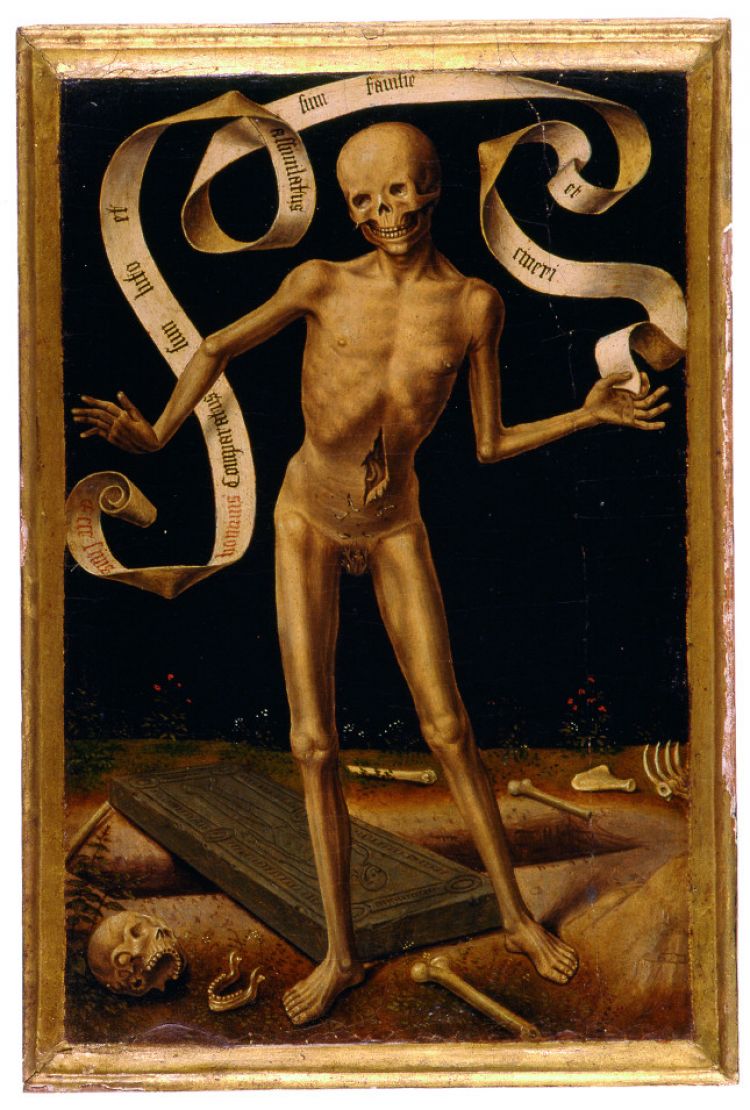Polyptych of Vanity and Earthly Redemption

This is one of the most valuable masterpieces of the museum.
The creator of the piece, the German artist Memling, founded the School of Bruges together with Gérard David. His fame spread to Italy during his lifetime, before peaking in the romantic period. His art is characterised by elegance, clarity and balance.
Here you can discover his Polyptych of Vanity and Earthly Redemption, in which the various elements work in pairs. The most famous part, Vanity, is shown by the young woman wearing only sandals. Notice the two greyhounds on her right. Their erotic symbolism adds to the strength of this nude. The mirror, an emblem of Lust, reflects an image of Eve or Bathsheba, the source of sin.
Vanity should be understood as linked to Death who announces the end of the man ‘made of clay’ who is destined to return ‘to ashes and dust.’ On the left, the virtuoso painting of the skull is framed by the sentence ‘I know that my Redeemer liveth, that tomorrow I will rise again and that, clothed again with my flesh and skin, I shall see God my saviour."
Walking around, you will discover in the centre Christ in glory. He opposes Hell and represents salvation. The Devil on his right threatens: "In hell there is no redemption."
The coat of arms is that of the sponsors of the work, the Family Loiani from Bologna, and originally it formed, together with the skull, the protection flaps of this small folding altar for use when it was taken on travels.
